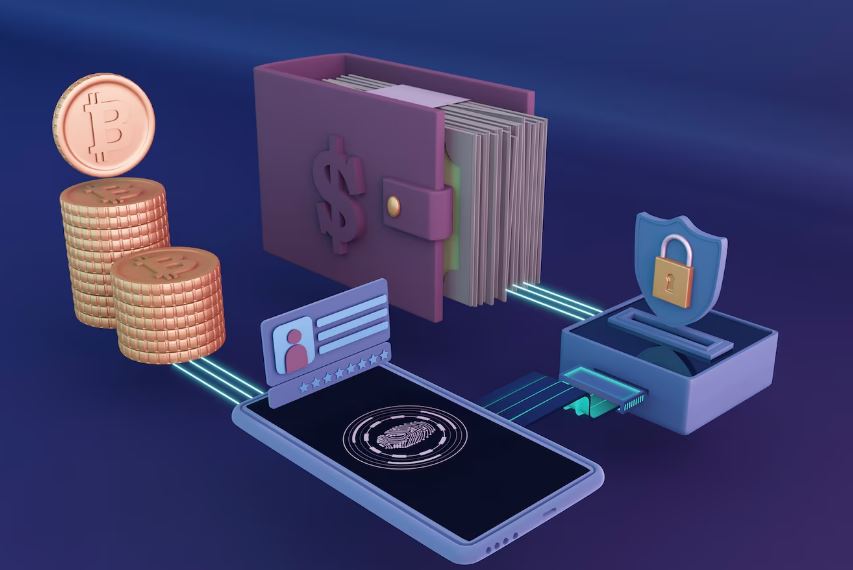Staking has become one of the most strikingly successful methods for generating passive income with cryptocurrencies in recent months. Holders are now actively supporting decentralized networks and generating consistent returns by locking up assets in proof-of-stake (PoS) blockchains rather than just keeping tokens in a wallet. Crypto users who participate in this system are contributors rather than merely observers.
Stakers are essential to transaction validation and blockchain security because they lock up tokens. This mechanism is significantly more sustainable because it doesn’t require the high electricity consumption that traditional mining does. Staking locks your cryptocurrency for a predetermined amount of time, much like depositing money into a fixed-term deposit account. However, instead of receiving interest from a bank, you receive cryptocurrency rewards straight from the network.
Key Points About Staking Cryptocurrency
| Feature | Details |
|---|---|
| Core Process | Locking up cryptocurrency to support blockchain operations |
| Blockchain Type | Proof-of-Stake (PoS) or Delegated Proof-of-Stake (DPoS) systems |
| Common Assets Used | Ethereum (ETH), Solana (SOL), Cardano (ADA), Polkadot (DOT) |
| Minimum Requirement Example | 32 ETH for Ethereum solo validator |
| Ways to Stake | Direct staking, staking pools, delegated staking, exchange staking |
| Reward Structure | Earn new tokens proportional to stake size and duration |
| Risk Elements | Market volatility, slashing penalties, lock-up periods |
| Regulatory Concerns | Increasing scrutiny from financial authorities, especially in the U.S. |
| Example Platforms | Kraken, Coinbase, Binance, Lido, Rocket Pool |
By implementing slashing—a deterrent penalty that drastically lowers the staker’s holdings if they try to defraud or destabilize the network—blockchain projects ensure honest behavior through strategic alignment. This risk-reward arrangement produces an attractive incentive model that promotes openness and dependability among participants.
Major players in the finance and technology industries have adopted this process in recent years. Mark Cuban, a billionaire investor, has openly shown interest in staking Ethereum. Institutional adoption has also increased, with Coinbase and Kraken offering tools that make staking easier for regular users. In addition to being very easy to use, these platforms are very transparent about the risks and expected returns they present.
Staking pools are especially advantageous for investors who are medium in size. These enable participants to pool resources, fulfill minimum requirements as a group, and receive rewards. To become a validator on Ethereum, for instance, you could stake a fraction through a pool and still receive a proportionate return rather than requiring 32 ETH. Staking has reached a much wider audience as a result of this inclusivity.
Even novice investors can participate in liquid staking, which offers flexibility by issuing representative tokens like stETH in exchange, by utilizing third-party platforms like Lido or Rocket Pool. Users can essentially double-dip—staking their cryptocurrency while using it elsewhere—by utilizing these tokens in decentralized finance (DeFi) applications.
PoS staking is a particularly creative method of assisting blockchain ecosystems in light of the growing need for energy-efficient solutions. PoS systems operate with substantially lower energy consumption than proof-of-work models, which depend on enormous amounts of processing power. Regulators and environmentalists have taken notice of this because they believe that staking will make decentralized finance more sustainable in the future.
Among crypto-savvy communities, staking subtly became a common concept during the pandemic, when digital finance was booming. People who were stuck at home started looking for new sources of income, and staking met that need. Those seeking low-maintenance options found it particularly appealing due to its passive nature and high-yield potential.
Staking offers early-stage cryptocurrency investors a useful way to increase their holdings without giving in to the temptation of continuous trading. It promotes a long-term strategy. Furthermore, staking may even confer voting rights in certain networks. For those who have a strong interest in blockchain innovation, this governance power empowers holders to influence the course of the project.
Staking is not without its challenges, though. There may be actual limitations during the lock-up period. You can’t get out of your position fast if the market declines during this period. Many people ignore the risk that price declines could erode possible gains. Additionally, there is an extra degree of trust if you are staking through a third party. You rely on their systems to work as intended. Failure on their part might lead to delayed withdrawals or slashed assets.
Regulatory friction is another factor to take into account. The U.S. Securities and Exchange Commission fined Kraken and mandated that they stop offering their staking service to U.S. customers at the beginning of 2023. Everyone in the cryptocurrency industry was reminded by this regulatory action that what is now legally permissible might not be tomorrow. Staking has nevertheless flourished, particularly outside of the US, where legal frameworks are more clear-cut or encouraging.
Staking services have significantly improved as a result of strategic alliances and new product development. These days, they are incredibly effective, aesthetically pleasing, and risk-reduction-focused. Platforms offer cutting risk percentages, real-time APY updates, and in certain situations, insurance coverage. Participation rates and user confidence have significantly increased as a result of these enhancements.
Staking is anticipated to become even more accessible in the upcoming years. Staking will probably develop into a multi-utility mechanism that powers lending, liquidity, and even gaming ecosystems as Layer 2 scaling solutions lower transaction fees and speed up speeds. Staking is already being incorporated into metaverse projects to incentivize platform loyalty and player engagement.
Retail investors are now able to access revenue streams that were previously only available to institutions by incorporating blockchain-based staking into their portfolios. It’s a surprisingly low-cost way to get involved with cutting-edge technology and generate steady profits. There is probably a staking option that suits your needs, regardless of whether you are holding ETH, ADA, or SOL.

